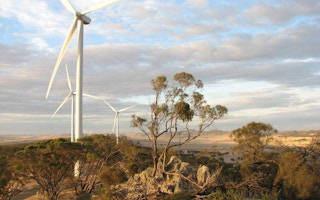This week’s release of the special report from the Intergovernmental Panel on Climate Change (IPCC) has put scientific evidence on the front page of the world’s newspapers.
As Australia’s Chief Scientist, I hope it will be recognised as a tremendous validation of the work that scientists do.
The people of the world, speaking through their governments, requested this report to quantify the impacts of warming by 1.5℃ and what steps might be taken to limit it. They asked for the clearest possible picture of the consequences and feasible solutions.
It is not my intention in this article to offer a detailed commentary on the IPCC’s findings. I commend the many scientists with expertise in climate systems who have helped Australians to understand the messages of this report.
My purpose is to urge all decision-makers—in government, industry and the community—to listen to the science.
Focus on the goal
It would be possible for the public to take from this week’s headlines an overwhelming sense of despair.
The message I take is that we do not have time for fatalism.
We have to look squarely at the goal of a zero-emissions planet, then work out how to get there while maximising our economic growth. It requires an orderly transition, and that transition will have to be managed over several decades.
That is why my review of the National Electricity Market called for a whole-of-economy emissions reduction strategy for 2050, to be in place by the end of 2020.
We have to be upfront with the community about the magnitude of the task. In a word, it is huge.
Many of the technologies in the IPCC’s most optimistic scenarios are at an early stage, or conceptual. Two that stand out in that category are:
-
carbon dioxide removal (CDR): large-scale technologies to remove carbon dioxide from the atmosphere.
-
carbon capture and sequestration (CCS): technology to capture and store carbon dioxide from electricity generation.
It will take a decade or more for these technologies to be developed to the point at which they have proven impact, then more decades to be widely deployed.
The IPCC’s pathways for rapid emissions reduction also include a substantial role for behavioural change. Behavioural change is with us always, but it is incremental.
Driving change of this magnitude, across all societies, in fundamental matters like the homes we build and the foods we eat, will only succeed if we give it time—and avoid the inevitable backlash from pushing too fast.
The IPCC has made it clear that the level of emissions reduction we can achieve in the next decade will be crucial. So we cannot afford to wait.
Many options
No option should be ruled off the table without rigorous consideration.
In that context, the Finkel Review pointed to a crucial role for natural gas, particularly in the next vital decade, as we scale up renewable energy.
The IPCC has made the same point, not just for Australia but for the world.
The question should not be “renewables or coal”. The focus should be on atmospheric greenhouse emissions. This is the outcome that matters.
Denying ourselves options makes it harder, not easier, to get to the goal.
“
So the scale of the task is all the more reason to press on today—at the same time as we press on with mining lithium for batteries, clearing the path for electric vehicles, planning more carbon-efficient cities, and so much more.
There also has to be serious consideration of other options modelled by the IPCC, including biofuels, catchment hydroelectricity, and nuclear power.
My own focus in recent months has been on the potential for clean hydrogen, the newest entrant to the world’s energy markets.
In future, I expect hydrogen to be used as an alternative to fossil fuels to power long-distance travel for cars, trucks, trains and ships; for heating buildings; for electricity storage; and, in some countries, for electricity generation.
We have in Australia the abundant resources required to produce clean hydrogen for the global market at a competitive price, on either of the two viable pathways: splitting water using solar and wind electricity, or deriving hydrogen from natural gas and coal in combination with carbon capture and sequestration.
Building an export hydrogen industry will be a major undertaking. But it will also bring jobs and infrastructure development, largely in regional communities, for decades.
So the scale of the task is all the more reason to press on today—at the same time as we press on with mining lithium for batteries, clearing the path for electric vehicles, planning more carbon-efficient cities, and so much more.
There are no easy answers. I hope, through this and other reports, there are newly determined people ready to contribute to the global good.![]()
Alan Finkel is Australia’s Chief Scientist from the Office of the Chief Scientist. This article is republished from The Conversation under a Creative Commons licence.









